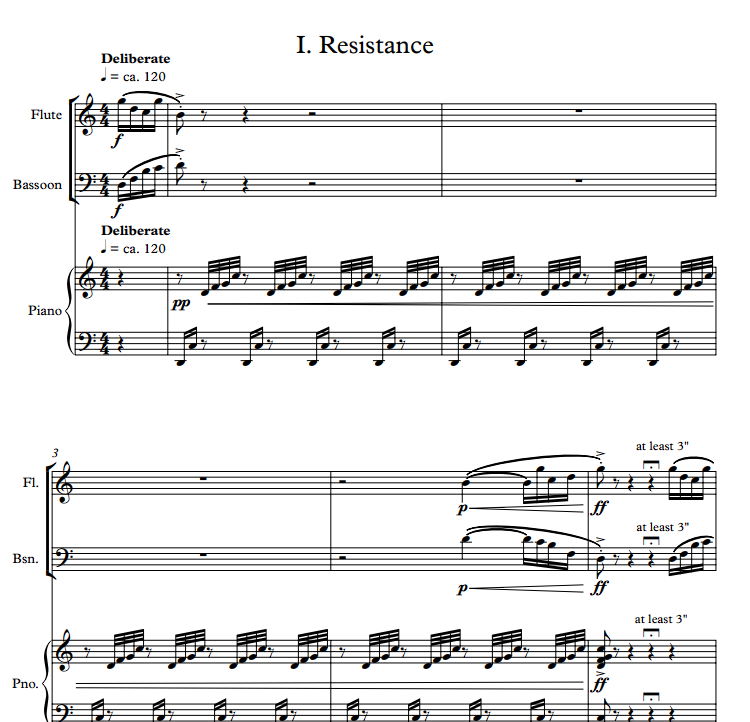charge
Charge
flute, bassoon and piano
The three movements of this piece each represent a physical property of analog circuitry. In the first movement, the concept of resistance is explored. For most of the movement, the piano acts like a battery, supplying voltage, energy, to the other instruments. At first, the battery is turned on with no other elements in place, causing the system to short circuit and the piano continuously increases the energy until it is turned off. This happens several times, the other instruments acting as the switch that turns the battery on and off. Then the flute and bassoon finally join in as resistive elements, for example, lightbulbs, which accept the piano's energy and expend it themselves. Several configurations are explored until a succession of flips of the switch ends the movement.
The second movement explores capacitance. Again, the piano acts as the power source, but now with an alternating current that causes the voltage to ebb and flow. The flute and bassoon are now capacitors, accepting the pianos energy but now slowly storing and releasing the energy in response to the flow of AC voltage. As the movement progresses, more and more is stored by the capacitors. At the end of the movement, the configuration changes, and the system becomes a frequency filter, the flute and bassoon only resonating a certain amount of the intense energy supplied to it. The instruments expend what's left of their energy and the movement finished.
The final movement explores a chaotic circuit, in which elements exhibit unpredictable and varying responses to a complex power input. The piano represents the input, a rapid string of arpeggios showing that complexity.Then the piano enters into a steady 5/8 patttern to which the other instruments respond with varying rhythms and meters. The movement concludes with a string of arpeggios in all the instruments which reaches critical mass of chaos and activity, finishing off the piece with an electric flourish.
